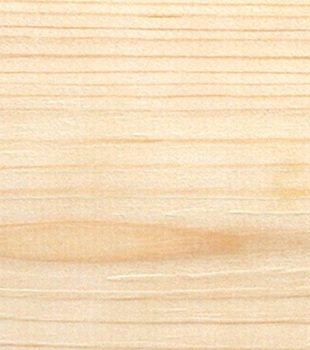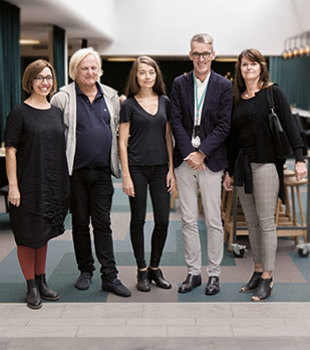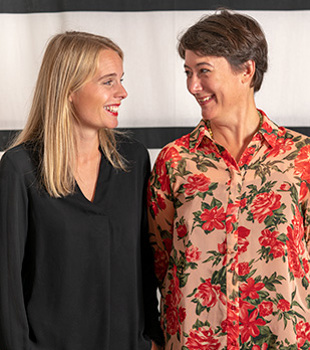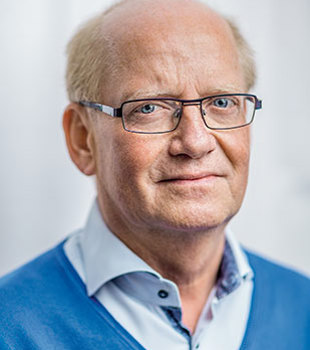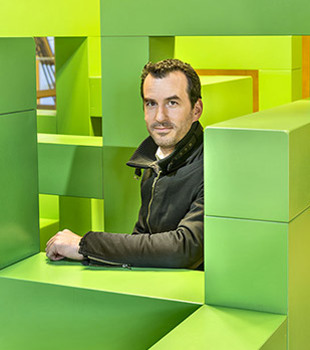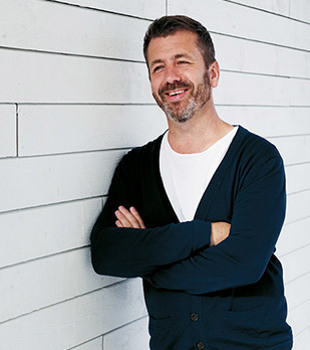What happened after you had presented your thesis?
Once I’d presented my theory-focused thesis, I began to think about how the product could actually be made in practice. I received a grant from the sawmill industry in Steiermark in south-east Austria, and together with three of its members, we developed CLT and founded the company KLH Massivholz. Then it just felt natural to continue researching CLT. In 2002 we founded a component centre in order to expand the fields of research relating to the product. A total of over EUR 12 million has been invested in research over the past 30 years.
How do you think CLT might develop in the future?
In my experience, you can neither plan a career nor predict the trajectory of a trend. The past few years have been highly satisfactory and successful for the industry in terms of production volumes. Naturally, the two-digit growth rate has led to positive forecasts. But I am currently in self isolation – due to coronavirus – and in this situation it’s difficult to see where we go from here. I’m therefore going to avoid making a prediction for the next 10 years. According to the motto “think globally, act locally”, I see the unpatented idea of CLT as a global solution for a locally active wood and construction industry.
Is it possible to use CLT as an exposed element of a façade and if so what has to be borne in mind?
CLT is a glued product, whereby the separate layers are arranged at 90° to each other to create a locking effect. This must be taken into account in the verification procedure, as well as mapping the stresses that arise between the different layers, compared with plywood, for example. With their locking layers, both these product families are sensitive to air humidity. This is also the reason why CLT is only approved for service classes I and II in Eurocode 5. Direct and permanent exposure to weather cannot be recommended without protective measures.
Why do you think CLT has become so popular in the last decade, compared with other mass timber products?
Compared with other sheet material in wood, CLT is a highly engineered product. In addition, it allows designs to make use of surface units, making it comparable with building in concrete. Structures planned in concrete can also be realised in CLT.
What tools would you recommend for initial design values?
Each CLT manufacturer offers consultancy services for architects and engineers and has their own solutions for verification. At Holz.Bau Forschungs we’ve also developed a very user-friendly and modular software tool and made it available for free (cltdesigner.at). It’s worth mentioning the CLT handbooks that have been issued in many countries (including Austria, Sweden and Canada) as well.
When will we see a common European CLT standard for manufacturing and calculating dimensions?
Draft standards are already available both for production and for dimensions and design. It’s therefore only a matter of time before standards are issued for the whole of Europe. Eurocode 5 is currently being revised. The new version should include everything to do with CLT. It’s hard to give a firm publication date, but maybe 2023.
Does CLT have any weaknesses that people should be aware of?
It’s generally worth noting that wood is sensitive to moisture. Moisture can penetrate CLT from both the outside and inside of a building. Particular attention needs to be given to the design procedures for the ultimate limit state and the serviceability limit state, plus the strength of the structure. In this context, it’s important to develop solutions that are suitable for wooden structures.
Do you have any thoughts about how CLT can be used to reduce energy consumption in a building?
Wood is a capillary, porous material that is 50% to 60% pores on average. This means wood has a very large inner area that absorbs water from the air. This affects practically all the physical, mechanical and technical properties of wood, including engineered wood products such as CLT. With wooden structures that are protected against the weather, an equilibrium moisture content of around 10% to 12% is usually achieved. This has been demonstrated by long-term measurements taken in wall structures of residential buildings that use CLT. In this desirable band of values, thermal conductivity where lambda is around 0.14 W/mK can be expected. This equates to an equivalent insulation thickness (with lambda 0.04 W/mK) of around 30 millimetres for a 100 millimetre thick CLT wall.
Are there any good combinations of CLT and other products that can reduce the amount of material used (statically speaking, a CLT building often has an overcapacity)?
CLT can be used as an individual load-bearing element and in the form of various hybrid solutions. Rib panels – a wood-wood hybrid of glulam and CLT – are one of the main ways of achieving large spans. Composite solutions with concrete, steel profiles and veneer-based engineered wood products are also worth mentioning.
Text David Valldeby




